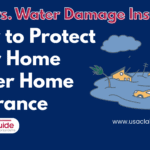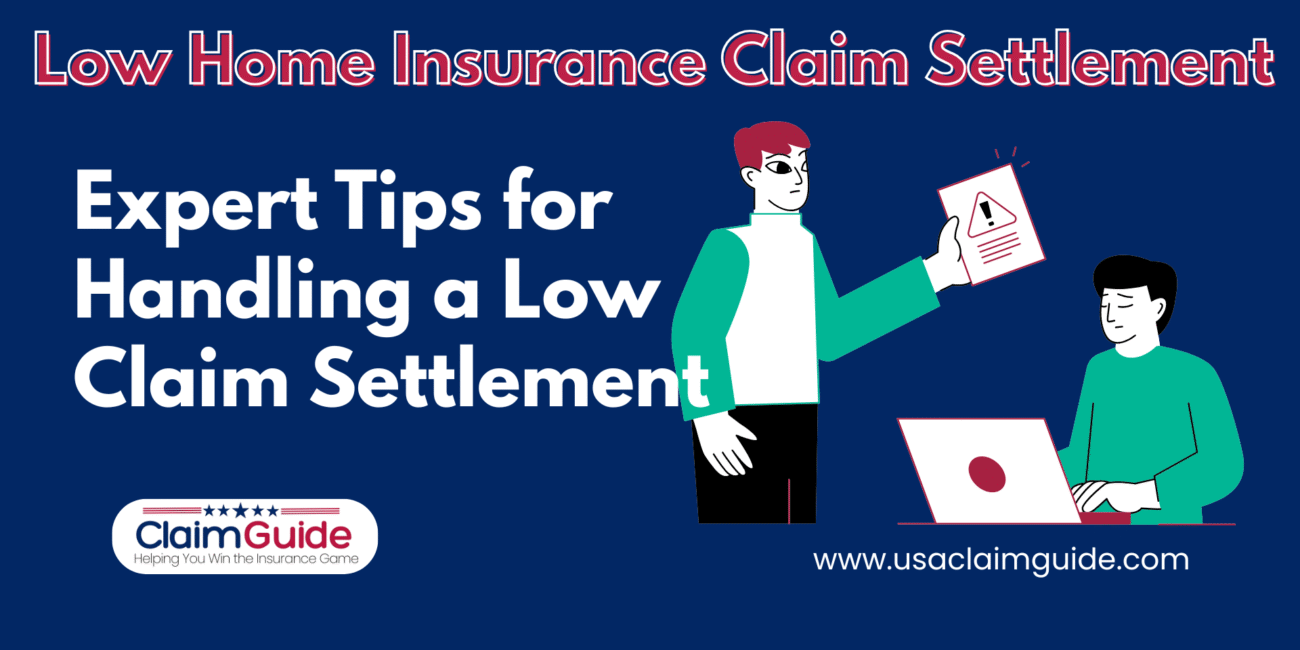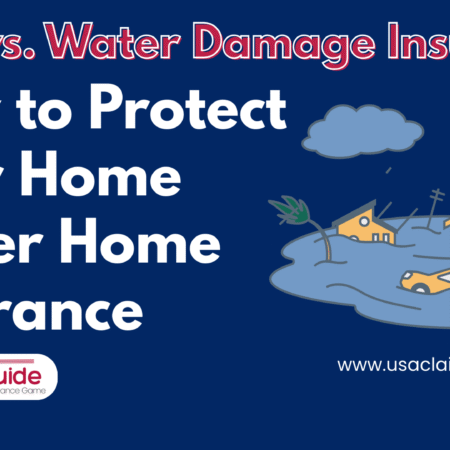A low home insurance claim settlement can feel like a second disaster after the damage to your property. You’ve paid your premiums for years, trusted that coverage would protect you in a crisis only to be met with an offer that barely scratches the surface of your repair costs. It’s an all-too-common reality for homeowners across the United States.
Unlike auto or health insurance claims, which are often resolved with standardized procedures, property damage claims involve more interpretation. Insurance companies may send adjusters with limited time, use outdated pricing databases, or apply depreciation in ways that undervalue your losses. And because every policy is different, and every claim involves unique circumstances, it’s easy for insurers to exploit the gray areas.
While some homeowners reluctantly accept the first offer out of stress or urgency, others find themselves frustrated, confused, or completely stalled in the process. A low home insurance claim settlement in the USA isn’t just an inconvenience it can delay critical repairs, increase out-of-pocket costs, and cause lasting financial strain.
Why Low Settlement Offers Happen More Than You Think
Many policyholders are surprised to learn that lowball offers are not accidental. In fact, minimizing payouts is often built into the business model. Some insurers use software tools to calculate costs in a way that favors the company, while others outsource adjusting work to third parties who may lack detailed knowledge of your home or local construction costs. Add to that vague policy language and a lack of transparency, and you’ve got the perfect recipe for underpayment.
In states frequently hit by natural disasters like Florida, Texas, or California where claims are more frequent, insurers may become even more conservative in their settlement estimates. In less disaster-prone areas, homeowners might be caught off guard simply because they’ve never filed a claim before and assume good faith will guide the process.
Don’t Settle for Less: Why Knowledge is Your Best Defense
Receiving a settlement offer that doesn’t reflect your real damages isn’t the end of the road it’s the start of a negotiation. But to push back effectively, you need more than frustration; you need facts, documentation, and an understanding of how the claims process really works.
Too many homeowners accept inadequate offers simply because they don’t know how to challenge them or believe the hassle isn’t worth it. But with rising repair costs and tighter insurance practices, being proactive has never been more important. Whether you’re facing a claim for water damage, fire loss, windstorm impact, or theft, knowing how to respond to a low settlement home insurance offer offer can save you thousands and restore your home the right way.
Knowing how to dispute a low home insurance settlement offer is not just helpful it’s essential. Knowing your rights and how to respond can dramatically affect how much compensation you ultimately receive. And with rising construction costs and increasingly severe weather events across the U.S., getting shortchanged on your insurance claim could mean footing a huge bill out of pocket.
How to Dispute Low Home Insurance Claim Settlement
When disaster strikes whether it’s a storm, fire, or burglary your home insurance policy should offer peace of mind. But too often, homeowners find themselves battling with insurance companies over inadequate claim payouts. A fair home insurance claim settlement isn’t always handed to you. Sometimes, you need to fight for it.
In this article, we’ll walk you through what to do if your home insurance offer is too low, how to dispute a low settlement, how to recognize claim adjuster tactics, and how to negotiate for the compensation you truly deserve.
What Is a Home Insurance Claim Settlement?
A home insurance claim settlement is the amount your insurance company agrees to pay after you file a claim for covered damage or loss. The settlement amount should be based on the coverage in your policy and the actual damage to your home or property.
However, many homeowners receive settlement offers that are significantly less than expected. These are known as “lowball offers,” and they can leave you financially burdened after an already stressful event.
Also Read: Roof Damage Insurance : Complete Guide to Claims, Coverage, & Payouts for Hail & Wind Storms
Why You Might Receive a Low Settlement Offer
Insurance companies are profit-driven entities. While adjusters may seem friendly, their job is to protect the company’s bottom line. Here are a few common reasons your home insurance claim settlement might be lower than expected:
- Depreciation deductions for age and wear of property
- Exclusion of certain items due to unclear policy language
- Estimates that undervalue labor or materials
- Incomplete inspections leading to overlooked damage
- Policyholders not fully understanding their coverage

What to Do If Your Home Insurance Offer Is Too Low
Receiving a disappointing claim offer is frustrating but don’t accept it without a fight. Here’s a practical step-by-step guide:
Review Your Insurance Policy in Detail
Go through your policy documents and declarations page. Understand what’s covered, your deductibles, limits, and exclusions. You need to know exactly what you’re entitled to before disputing the offer.
Request a Full Explanation of the Offer
Ask your insurer to provide a written explanation of how they arrived at the settlement figure. This includes the adjuster’s damage assessment and depreciation calculations.
Document All Damage Thoroughly
Take high-resolution photos and videos of the damaged property. Create an itemized list of all lost or damaged items, including their approximate value and age. The more evidence you have, the stronger your dispute case.
Get Independent Estimates
Hire a licensed contractor or public adjuster to assess the damage. Their report can offer a more accurate cost of repairs, often highlighting discrepancies in the insurer’s figures.
How to Dispute a Low Settlement Offer on a Home Insurance Claim
If you’re confident the offer is unfair, it’s time to formally dispute it.
Write a Rebuttal Letter
Draft a professional but assertive letter to your insurer. Include:
- A summary of your claim
- Specific points where you disagree with their assessment
- Documentation and third-party estimates supporting your case
- A clear demand for a revised offer
Sample Dispute Letter Template for a Low Home Insurance Claim Settlement in the USA
📄 Subject Line (for email or printed letter): Dispute of Low Home Insurance Claim Settlement – [Your Policy Number]
Your Name
Your Address
City, State, ZIP Code
Phone Number
Email Address
Date
Claims Department
[Insurance Company Name]
[Company Address]
City, State, ZIP Code
Re: Claim Dispute for Policy #[Your Policy Number] – Claim #[Claim Number]
Dear Claims Adjuster / Claims Manager,
I am writing to formally dispute the settlement offer I received regarding my recent claim under policy #[Your Policy Number], filed on [Date of Loss] for the damages to my property located at [Your Property Address].
On [Date], I received your offer of [$Amount], which I believe significantly undervalues the true cost of repairs and does not adequately reflect the extent of the damage sustained during [briefly describe event, e.g., the recent storm on April 5th].
After obtaining independent estimates from licensed contractors, I have determined that the actual repair costs amount to approximately [$Your Estimate Amount]. Enclosed with this letter, you will find:
A detailed contractor estimate
Photos documenting the damage
A comparison of the line-item costs
[Optional: a copy of your policy’s Replacement Cost Value (RCV) or Additional Living Expense (ALE) clauses, if applicable]
I respectfully request a reassessment of my claim and a revised settlement offer that aligns with the real costs involved in restoring my home to its pre-loss condition.
Furthermore, if necessary, I am prepared to initiate the appraisal process as outlined in the terms of my homeowner’s insurance policy. I would also like to reserve my right to escalate this matter to my state’s Department of Insurance if a fair resolution cannot be achieved in a timely manner.
Please respond to this letter within [10–14] business days, as per standard claim handling timeframes in [Your State].
Thank you for your prompt attention to this matter. I hope we can reach a mutually satisfactory resolution without further delays.
Sincerely,
[Your Full Name]
[Signature if printed]
Contact a Public Adjuster
Public adjusters work on your behalf (not the insurance company’s) to get you a fair home insurance claim settlement. Many work on a contingency fee basis—typically 10-20% of the final payout.
File a Complaint with Your State’s Department of Insurance
If negotiations stall, report the claim to your state’s insurance regulator. In the U.S., every state has an agency that oversees insurance conduct. This step puts pressure on the insurer to act in good faith.
Consider Legal Action
If your claim is substantial and the insurer continues to act unfairly, consult a property insurance attorney. They can guide you through mediation, arbitration, or even litigation.
How to Negotiate a Lowball Home Insurance Offer
Here’s how to approach negotiations like a pro:
✅ Be Prepared
Know your policy and have all documentation ready—estimates, receipts, photos, and correspondence.
✅ Stay Calm and Professional
Losing your temper can derail negotiations. Remain calm and firm throughout.
✅ Reference Comparable Settlements
If neighbors with similar damage received more, mention it. This can add context to your claim.
✅ Don’t Be Afraid to Say No
You have the right to reject an inadequate offer. Just make sure you provide a detailed reason backed by evidence.
Home Insurance Claim Adjuster Secret Tactics
Insurance claim adjusters often use subtle strategies to minimize payouts. Here are some to watch for:
Underestimating Repair Costs
They may use outdated pricing software or contractors who offer below-market bids.
Depreciation Games
Adjusters often apply excessive depreciation to reduce your payout especially for older items.
Delay Tactics
Dragging out the process can pressure you into accepting a lower offer out of frustration or urgency.
Pushing Quick Settlements
They may offer quick cash in exchange for a full release. Always get multiple estimates before signing anything.
Limited Communication
Adjusters may become unresponsive, hoping you’ll give up. Persist and document every communication.

Tips for a Successful Home Insurance Claim Settlement
- Start the claim process immediately after the loss.
- Maintain a claim journal track calls, emails, and inspections.
- Don’t throw away damaged items until the adjuster sees them.
- Keep copies of everything emails, letters, receipts, and estimates.
- Understand your rights under your state’s insurance laws.
When to Hire a Public Adjuster or Attorney
- If your claim is over $10,000 and the insurer is stalling or lowballing
- If you feel overwhelmed by the claims process
- If you suspect bad faith or unfair tactics from the insurer
A skilled public adjuster or attorney can often increase your settlement significantly sometimes by tens of thousands of dollars.
Also Read: The Ultimate Guide – Water Damage Insurance Claim Procedure, Payout, Tips in the USA
State-Specific Challenges That Impact Home Insurance Claim Settlements in the USA
Florida – The Hurricane State and the Fine Print Problem
Florida is no stranger to tropical storms and hurricanes, but many homeowners are blindsided when their claim settlements come up short. Even with comprehensive coverage, policyholders often find that wind and water damage claims are subject to high deductibles and ambiguous exclusions. For instance, many policies separate flood damage from wind-driven rain, allowing insurers to deny or reduce payouts.
Example: After Hurricane Ian, several Florida homeowners reported receiving offers as low as $12,000 for damages that contractors estimated would cost over $80,000 to repair. The low home insurance claim settlement forced many to dip into savings or take out loans just to restore basic livability.
California – Wildfire Claims and the “Actual Cash Value” Trap
In California, wildfire season has led to an uptick in home insurance claims. However, a growing number of policies now include Actual Cash Value (ACV) clauses instead of Replacement Cost Value (RCV). This means insurers deduct depreciation from the payout, often leaving homeowners far short of what’s needed to rebuild.
Example: A homeowner in Northern California filed a claim for a destroyed kitchen during the Dixie Fire. The replacement cost was estimated at $55,000, but the insurer only offered $23,000 due to age-based depreciation. The homeowner, unaware of the RCV vs. ACV distinction, initially accepted the settlement before later hiring a public adjuster and securing a higher payout after months of dispute.
Texas – Hailstorm Damage and Undervalued Roof Claims
Texas sees frequent hailstorms that cause widespread roof and exterior damage. However, many insurance companies operating in the state have adopted tiered roof coverage or exclude cosmetic damage, leading to low home insurance claim settlements even when repairs are necessary.
Example: In Dallas, a homeowner filed a claim after a major hailstorm damaged her 12-year-old roof. Despite visible shingle loss and leaks, the insurance company claimed the damage was “cosmetic only” and offered $3,200 far less than the $14,000 repair quote she received. After escalating to the Texas Department of Insurance, a revised settlement of $10,500 was eventually issued but not without weeks of delay.
Louisiana – Delayed Payouts and Understaffed Adjusters Post-Hurricane
Following hurricanes like Ida and Laura, thousands of Louisiana residents experienced both delayed and incomplete claim settlements. Due to a shortage of licensed adjusters and backlogs in inspections, many claims were either under-assessed or processed by out-of-state adjusters unfamiliar with local building codes.
Example: A homeowner in Lake Charles waited six weeks for an adjuster to inspect his property after Hurricane Laura. The initial settlement was $9,000 less than half of the damage assessed by local contractors. He hired an independent estimator and filed a formal complaint, eventually recovering an additional $11,000 months later.
Colorado – Wildfire and Snowstorm Claims Undervalued Due to Software Estimates
Colorado homeowners have faced dual threats from wildfires in the summer to blizzards and frozen pipes in the winter. Unfortunately, many insurers rely on national cost-estimating software that doesn’t account for rising local construction prices or labor shortages, leading to lowball settlements.
Example: A Boulder homeowner dealing with frozen pipe damage received a settlement of $7,800, even though local plumbers estimated the repair at over $15,000 due to emergency rates during a snowstorm. The insurer’s software failed to adjust for surge pricing or winter-specific challenges, leaving the homeowner with a significant gap in funding.
Why Geography Matters in Your Claim Outcome
The reality is that where you live plays a major role in how home insurance claim settlements are calculated, delayed, or disputed. State-specific regulations, weather risks, labor costs, and insurer practices all shape your outcome. Understanding these regional nuances can give you a major advantage when navigating a claim or disputing a low settlement offer.
No matter the state, homeowners are encouraged to:
- Review their policy annually for exclusions and depreciation clauses.
- Document property conditions with pre-damage photos and detailed records.
- Push back if the claim offer doesn’t reflect real, local repair costs.
Expert Tips for Handling a Low Home Insurance Claim Settlement in the USA
✅ Never Accept the First Offer Without Question
Insurance companies often start with a conservative estimate essentially testing whether you’ll settle quickly. If your home insurance claim settlement offer seems low, request a full breakdown. Ask for line-item explanations and compare them to your contractor’s estimates. Insurers are required to explain how they calculated the payout.
✅ Hire a Public Adjuster Not Just a Contractor
Public adjusters work for you, not the insurance company. Unlike contractors, their role is to evaluate the damage, interpret your policy, and negotiate directly with the insurer. They’re especially helpful if your claim is large or if you suspect the insurer is lowballing the estimate.
Tip: Choose a licensed public adjuster with experience handling claims in your specific state. Laws vary, and local expertise matters.
✅ Document Everything in Writing and With Photos
Every conversation with the insurer should be confirmed via email or written letter. Take photos and videos of all damage before any cleanup or repairs begin. Also, keep receipts for temporary repairs, hotel stays, or meals if you’re displaced these can support additional living expenses (ALE) claims.
✅ Get an Independent Estimate
Insurance adjusters may use outdated pricing software or generic national averages. To counter this, get a repair estimate from a licensed, reputable contractor in your area. If possible, get two. These professional opinions often carry more weight during negotiation or formal disputes.
Did you know? In some states, insurers must consider reasonable, local market rates when calculating your payout. Use this to your advantage.
✅ 5. File a Formal Dispute or Appraisal
Most U.S. home insurance policies include an appraisal clause, which allows you to dispute the claim value if both sides can’t agree. You choose an appraiser, the insurer chooses theirs, and a neutral umpire may be called in to make the final decision.
Important: You don’t need a lawyer to invoke this clause, but the process can take time. Use it when there’s a significant gap between your estimate and theirs.
✅ Know Your State’s Insurance Laws
Each state has a Department of Insurance (DOI) that regulates claim timelines and insurer behavior. Some states allow you to file a bad faith complaint if the insurer delays payment, misrepresents policy details, or intentionally underpays.
Example: In California, insurers must acknowledge claims within 15 days and provide a decision within 40. If they don’t, you can escalate the issue.
✅ Don’t Rush Repairs Without Settlement Approval
If you start full repairs before the claim is finalized, the insurer might argue that some damage was unrelated or not documented properly. Always get written approval or agreement on repair scope before starting.
Conclusion: Stand Your Ground for a Fair Home Insurance Claim Settlement
Knowing a home insurance claim settlement can be complex and frustrating, especially when the insurer offers less than you deserve. But by staying informed, organized, and assertive, you can significantly improve your outcome.
You’ve paid your premiums now it’s time to ensure your insurer holds up their end of the bargain. Don’t settle for less than what you’re owed. Whether you’re negotiating directly, hiring a public adjuster, or pursuing legal help, remember: knowledge is power.










